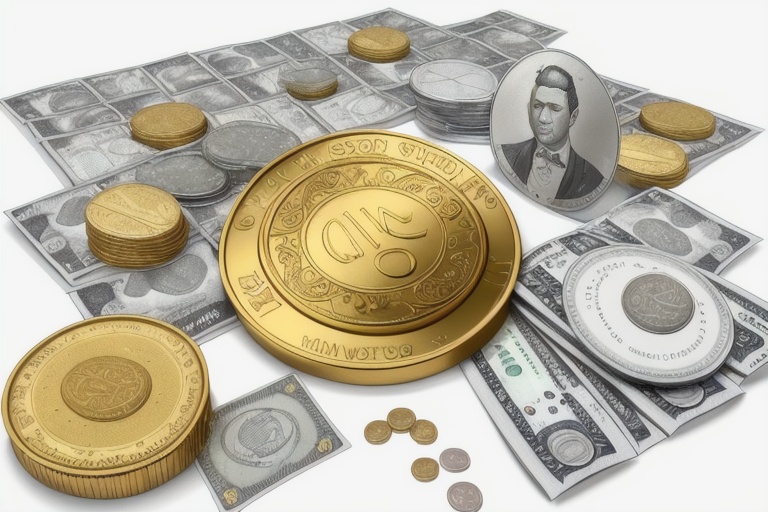Coin collecting, often referred to by its formal name, numismatics, is a pursuit steeped in history that encompasses the conservation and analysis of currency in various forms, such as coins, tokens, and paper money. This pastime, one of humanity's earliest recorded hobbies, has been practiced for thousands of years and offers a window into the cultural and artistic heritage of previous civilizations. Though other forms of currency such as paper money are collected, our exploration will center on the eloquent history and captivating art of coin collecting.
Coin collecting, often referred to by its formal name, numismatics, is a pursuit steeped in history that encompasses the conservation and analysis of currency in various forms, such as coins, tokens, and paper money. This pastime, one of humanity's earliest recorded hobbies, has been practiced for thousands of years and offers a window into the cultural and artistic heritage of previous civilizations. Though other forms of currency such as paper money are collected, our exploration will center on the eloquent history and captivating art of coin collecting.
Origins of Coin Collecting
Much to the surprise of many enthusiasts, the roots of coin collecting extend far beyond the Renaissance era, which is a common misconception. The existence of coin collecting can be traced back to rulers of ancient times, such as the Roman Emperor Augustus, who was known to cherish antique coins from different cultures, sharing them as gifts with his associates. Archaeological findings, along with literary evidence stemming from ancient Greek and Roman documentation, fortify the belief that the collection of coins has been an enduring activity since those classical periods.
A testament to such early numismatic interests is the discovery of a hoard of Roman gold coins in Vidy, Switzerland, comprising approximately 70 coins, each of a unique design, collected during the period when Romans governed the town. These coins were revered not solely for their monetary aspect but were also valued as items of beauty, often being incorporated into ornamental and jewelry pieces of the era.
Ancient Coins as Art and Collectibles
By the 4th or 3rd century BC, coin collecting progressed into a form of art collecting, recognizing the aesthetic value of coins. Holding status as both affordable and portable artifacts, coins were among the most sought-after items by collectors. The meticulous designs carved into the coins' obverse and reverse sides relayed imagery of authority, mythology, and key events, illustrating an exceptional craftsmanship enabled by the modest technological means of the time.
Evolution of Coin Collecting
Moving through the ages, coin collecting has adapted to changes and advances in monetary systems, with the widespread utilization of paper currency emerging significantly after the 18th century. With the rise of paper money, a distinct collecting culture unfolded, branching out from the traditional coin collecting practices.
Today, numismatics is a revered and joyful hobby practiced worldwide. Enthusiasts are eager to acquire collections featuring currencies from multifarious countries, periods, and denominations, each collection casting reflections of personal interest and fascination with the broader context of economics, history, art, and culture. Coins not only captivate collectors with their artistic merit but also educate them through their embedded tales of bygone times and personalities.
Renaissance: A Golden Age for Coin Collectors
It was not until the Renaissance—a vibrant epoch renowned for the rebirth of arts and sciences—that coin collecting burgeoned among the European elite. Referred to as the "hobby of kings," the passion for ancient coins sparked a trend where prominent artists were commissioned to create both replicas of ancient coins and original portrait and commemorative medals, which themselves became collectibles in high esteem. As demand skyrocketed, markets expanded, and counterfeit creations began to populate the numismatic landscape.
Changing narratively in the 17th century, the hobby's focus shifted toward scholarly endeavors. Collections swelled in size and diversity, establishing numismatics as a scholarly pursuit. The practice of maintaining treatises and catalogs contributed to its recognition as a scientific field.
The Rise of Public and Institutional Collections
The 18th century witnessed the ascendancy of public collections and institutional involvement, which propelled numismatics to unprecedented heights of academic inquiry. Scholarly sponsorship and the prolific publication of numismatic research democratized access to numismatic knowledge. Many private collections were absorbed by state entities, enhancing the breadth of numismatic understanding.
Coin collecting's allure spread to the growing middle class, enabling merchants and professionals to partake in the excitement. Ancient coins offered an authentic slice of history and became increasingly favored among a broader audience. Each coin served as a conduit to the past, extending the lifespan of historical narratives to subsequent ages.
Enduring Allure of Ancient Coins
The enthralling draw of ancient coins persists, with their designs narrating sagas of mighty sovereigns, mythical entities, and long-lost societies. These miniature metal canvases unlock visions of the past, shedding light on varying epochs' artistic expressions, societal norms, and political terrains. Ancient coins like those showcasing Constantine the Great or Alexander the Great carry intrinsic narratives and symbolisms that have captivated collectors for centuries.
Numismatics in Modern Times
The discipline of numismatics is ever-evolving, fueled by ongoing archaeological recoveries and scholarly advancements. Museums, dedicated collectors, and academics play pivotal roles in the safeguarding and analysis of these priceless artifacts. Surpassing mere hobbyist intrigue, coin collecting offers a fulfilling journey into history for aficionados of all ages, extending its allure across borders and social strata. The numismatic world brims with intrigue and historical wealth, with each coin poised to relay its singular legacy.
Coin collecting taps into the inherent human curiosity about our origins and the artistry of civilizations past. Its enduring popularity underscores a collective desire to connect with, preserve, and celebrate our heritage through the timeless medium of currency. Whether you are an experienced collector or a curious novice, the realm of coins awaits with open arms, ready to enrich and inspire all who choose to delve into its depths.
Information for this article was gathered from the following source.

